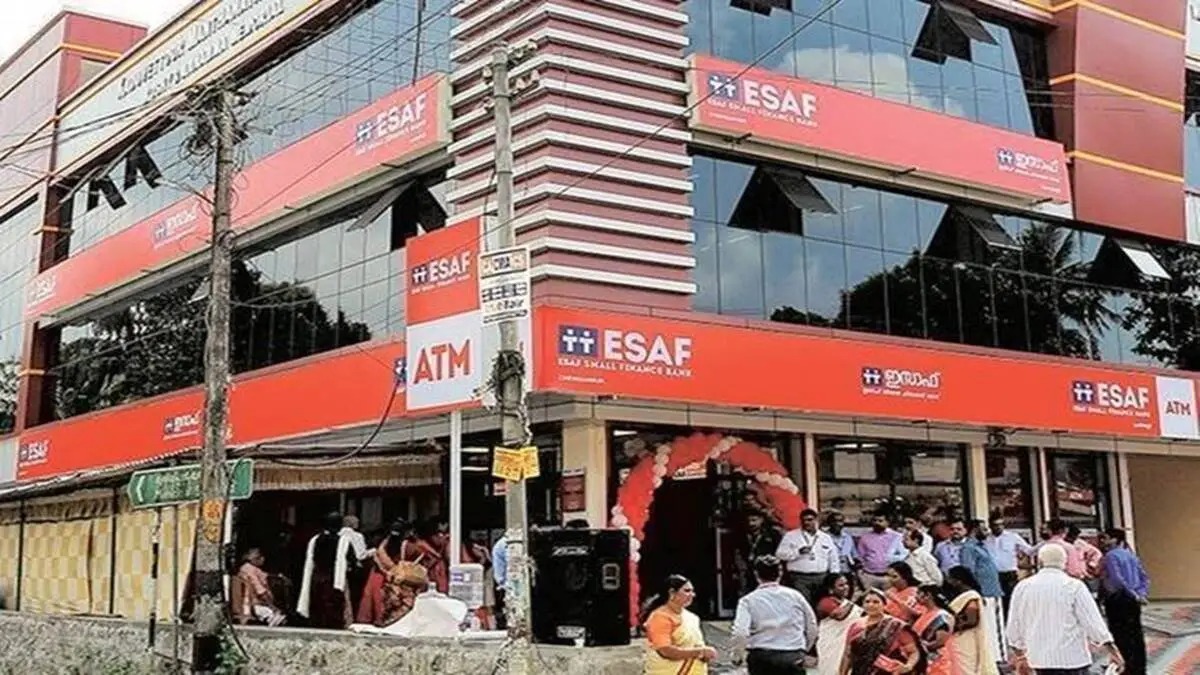ESAF Small Finance Bank Ltd has reported a consolidated net loss of Rs 812.2 million for the quarter ended June 2025, as rising provisions and deteriorating asset quality continued to weigh on its financial performance. Despite earning Rs 8.28 billion in interest income, the bank’s gross non-performing asset (NPA) ratio surged to 7.48 percent, reflecting stress in its microfinance and unsecured lending portfolios.
Following the quarterly results, ESAF’s shares fell by 4 percent on the National Stock Exchange, as investors reacted to the widening losses and weakening asset metrics. The decline underscores growing concerns over the bank’s ability to stabilize its balance sheet and return to profitability.
Key Financial Highlights for Q1 FY26
- Net loss of Rs 812.2 million, driven by elevated credit costs and provisioning requirements
- Interest income rose to Rs 8.28 billion, supported by growth in retail and MSME lending
- Gross NPA ratio increased to 7.48 percent, indicating asset quality deterioration
- Operating expenses remained high due to branch expansion and technology investments
- Shares declined 4 percent post-results, reflecting investor unease over financial health
Breakdown of Performance Drivers
1. Interest Income and Lending Activity
- ESAF’s interest income was fueled by growth in microloans, gold loans, and small business financing
- Net interest margins remained under pressure due to rising cost of funds and competitive pricing
2. Asset Quality and Provisioning
- The gross NPA ratio rose to 7.48 percent, up from 6.9 percent in the previous quarter
- Higher slippages were observed in rural and semi-urban geographies, particularly in unsecured loan segments
- Provisioning coverage ratio was maintained at prudent levels, but impacted bottom-line profitability
3. Market Reaction
- ESAF’s shares fell 4 percent on the NSE following the announcement of quarterly losses
- The decline reflects investor concerns over sustained losses and asset quality stress
- The stock has been under pressure in recent quarters, with multiple sequential losses reported
Strategic Response and Business Outlook
ESAF Small Finance Bank is undertaking corrective measures to stabilize performance:
- Strengthening credit appraisal and risk monitoring systems to reduce future delinquencies
- Enhancing collections infrastructure and borrower engagement in stressed regions
- Diversifying loan book toward secured products such as housing finance and vehicle loans
- Accelerating digital onboarding and mobile banking adoption to improve cost efficiency
Regulatory and Competitive Landscape
ESAF operates in a highly regulated and competitive small finance banking sector:
- The Reserve Bank of India continues to monitor asset quality and governance standards across SFBs
- ESAF’s focus on financial inclusion and underserved markets remains aligned with regulatory priorities
- Competition from fintechs and NBFCs is intensifying, especially in urban microfinance and digital lending
Conclusion
ESAF Small Finance Bank’s Q1 FY26 performance reflects the operational and credit challenges of serving economically vulnerable segments. With Rs 8.28 billion in interest income and a net loss of Rs 812.2 million, the bank faces a critical phase of restructuring and risk containment. The 4 percent drop in share price post-results highlights investor anxiety over asset quality and profitability. As ESAF strengthens its credit processes and pivots toward more secure lending, the coming quarters will be pivotal in restoring financial stability and market confidence.
Sources: Moneycontrol, Economic Times, CNBC TV18, ESAF Small Finance Bank official disclosures
